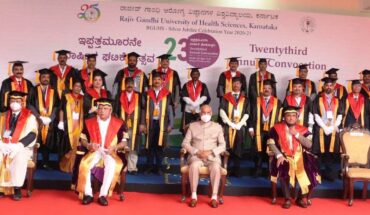By Dominick Rodrigues
Mumbai : While barely 4% to 5% of a 4.4-Million Workforce in the outsourcing industry is traveling to work, India’s US$ 194-Billion Outsourcing Industry has witnessed a whopping estimated 85% drop in Carbon Emissions during the year at ~0.3 Million Tonnes of Carbon Emission from a pre-pandemic level of ~2 Million Tonnes of Carbon Emissions annually.
These statistics came off a study conducted by UnearthInsight — a metrics benchmarking and market intelligence firm — for FY 2020-21 that included around 2000-plus outsourcing technology companies in India including IT, ITeS, Engineering, GIC/GCC and Startups.
The Covid-19 Pandemic has propelled India’s $194 Billion Outsourcing Industry towards Carbon Neutrality with Hybrid Working Models, Electric Mobility and Digital Disruption for Campus Hiring.
Meanwhile, the study revealed an interesting set of findings on India’s outsourcing industry’s significant contribution towards carbon emission during the pandemic period.
It highlighted an estimated barely $750 Million spent on Travel costs in FY 2020-21 by outsourcing industry — compared to $2.9 Billion in FY 2019-20, while Top 5 IT services companies (TCS, Infosys, HCL, Wipro, Tech Mahindra) spent around $370 Million on Travel costs in FY21 — 75% lower compared to $1.4 Billion in FY20, thus reducing carbon emission resulting from commute to work, domestic travel, and international travel.
Noting that the outsourcing Industry was on track for the adoption of Hybrid Working Models, Electric Mobility even before Covid, Gaurav Vasu, Founder & CEO, Unearth Insight said that the pandemic and quick adoption of Digital tools/technology dramatically changed the scenario with today’s carbon emission reduction looking to be sustainable over a longer period of time.
“COVID19 disruption has made outsourcing organizations, clients’ and employees’ environment-friendly by helping them accelerate their journey towards Carbon Neutrality and also Digital Workplace, improving operating margins in the long run,” he said, adding “We see a greater realization among companies on issues related to carbon emissions, hybrid workplaces and WFH policy and these are trends which will shape the future.”
The study estimates over 20% to 25% employees returning back to work by early next year as global and domestic IT firms’ complete vaccination of employees & families.
Pre-pandemic pilots and investments of larger Tech and Captives — who deployed Disruptive EV (Electric Vehicle) Startups like Lithium Urban Tech & Trivision Mobility along with AI Transportation Tech Platforms Routematic, Moveinsync, BlueSmart and Sun Telematics – are expected to pay off as companies aim to move from ~5% Employee travel on EV to over 25% to 30% by 2025 helping achieve carbon Neutrality targets. Also, significant adoption of Digital Tools to avoid future domestic and international travel needs with consumer-grade experience will also aid Carbon Neutrality targets.
The COVID-19 disruption also made the largest industry players move from pilot to large-scale deployment of technologies like Digital Campus Hiring Platforms, which helped significantly reduce carbon emissions earlier generated by travel to over 1000+ campus across the country.
In the new trend in hiring, Digital Fresher Hiring strategy has made Day 1 slot ‘irrelevant’ for large Tech Services companies and an estimated ~70,000 to 75,000 freshers got hired through End-to-End Digital Platforms of Top two IT companies (TCS and Infosys).
It is also expected that by 2025, 75% of Campus Hiring for Tech industry is expected to happen through Advanced End-to-End Digital Platforms/Tools, which will force other Tier I and Tier II IT firms also to build Digital Platforms to attract graduate talent from across the country. These tools and platforms have created a level playing field for engineering graduates, regardless of the type of college or tiering as assessment determine the quality of talent rather than Tiering of college/institute.




